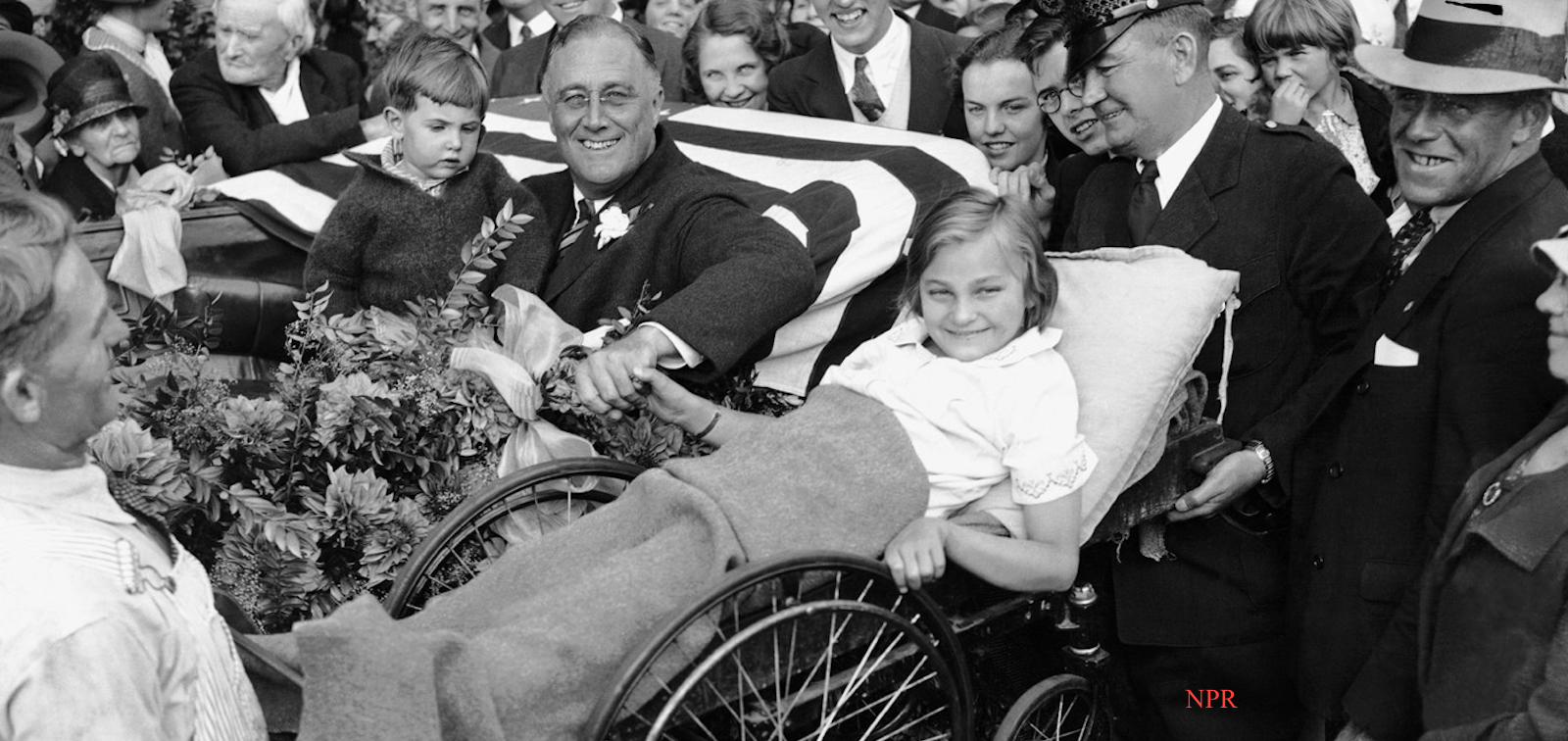In light of President Donald Trump being diagnosed with Covid-19, it is striking and concerning when the President of the United States, the very symbol and figurehead of the nation, contracts a virus of which everyone is at risk. Yes, the President is no more at risk of a pandemic or epidemic than the average person. He is human as well as the rest of us. The virus itself as noted in the differential effects section does not discriminate amongst human beings. However, there are factors that distinguish the President. He has access to the best medical care and is typically better off than the general public in terms of socio-economic status. He also has the power and responsibility to make a difference and to determine what is best for the general welfare of the US. In short, if the President has the virus, this emphasizes how there is a crisis that needs to be dealt with. President Trump’s policy, whether or not you support it, towards the Coronavirus has been very controversial. He was sceptic of masks and was concerned about closing the economy. He made a comment in regard to drinking bleach which he claimed to be a joke, and promoted Malaria drugs as treatment. He also emphasized Operation Warp Speed and consistently made the assertion that a vaccine will be made soon, even giving timelines such as a few weeks. There are two ways to interpret this. One, President Trump was downplaying the virus and was one of the main reasons why he lost the election. Or, President Trump was a hero giving the population hope and strength that this virus can be conquered and along the way, the economy will not crash. Polio and Covid-19 are very different scientifically but, in a way, there is a similarity between President Trump’s and President Franklin Delano Roosevelt’s response to the nation’s medical crisis, despite being on opposite political spectrums. In addition, both Presidents had to hand over the virus reins to another President, Trump to Biden and Roosevelt to Truman. President Roosevelt, similar to Trump, was a nation’s leader who had cope with the virus of the time and whose response was controversial.
As highlighted in the PBS video above, President Roosevelt is remembered for hiding his paralysis. He would be seen walking with some sort of support that was not very obvious and would hold himself up on the podium while speaking. He was not seen in a wheelchair in the public eye. Also noted by the PBS video, he even painted his braces black and wore all black clothing. The Smithsonian video articulated that he made an agreement with the Press to not capture him walking or getting in and out of cars. If President Roosevelt being “crippled” was common knowledge, it was believed that he was not going to be reelected. A difficult task that politicians always have to grapple with is reelection while also having to pass policy that will benefit the wellbeing of the people. The public could have worried that the President might not have performed his job well with a disability, and there was a portion of the voting public that also discriminated against those with disabilities. In the early years of Polio and Covid-19, both Presidents Roosevelt and Trump had the task of not expressing panic until more knowledge was known. Here, we see politics coming into play in disaster response. With Trump’s policies on economics, he was also trying to appeal to his demographic which contributed to such a close voting election. President Roosevelt’s response to his paralysis was in addition seen as harming the disability movement. Him not owning up or expressing his disability may have validated the idea for some that being disabled is somehow wrong or bad. Amy Fairchild opens up her article describing the President Roosevelt memorial in Washington D.C. She writes, the original plan of the memorial “raised a storm of controversy before it opened in 1997, when disability rights activists protested that the commemoration failed to feature the president – whom poliomyelitis paralyzed in 1921 – prominently in a wheelchair” (Fairchild 2001, 488). The controversy behind the memorial revealed by this quote was that a large part of President’s Roosevelt’s life was left out by this memorial, potentially painting his disability as not important enough or a factor that should not be remembered. With this in mind, President Roosevelt also led during World War II and the Great Depression, remembered by his New Deal policies, which appeared to outshine his paralysis.
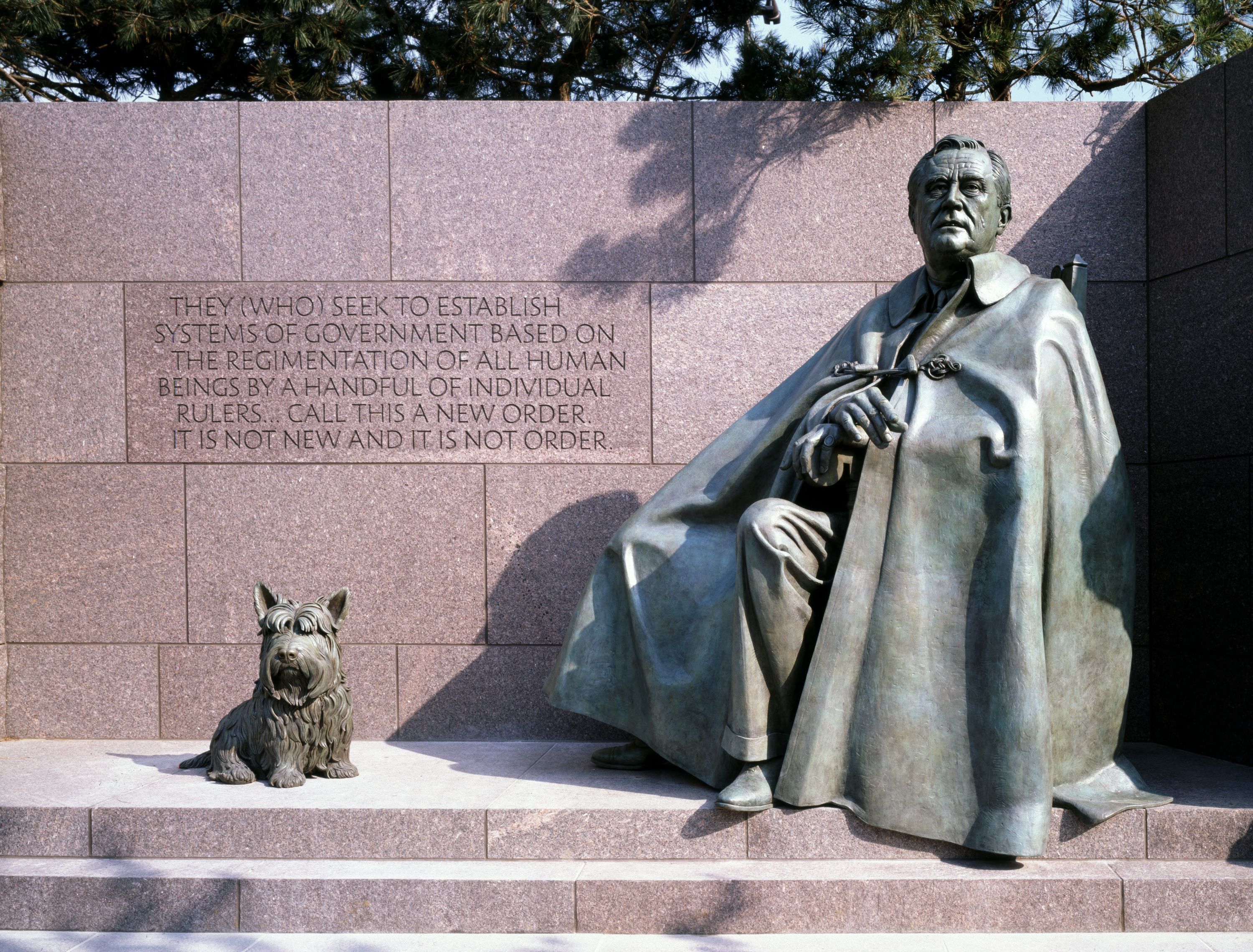
FDR Memorial, National Park Service
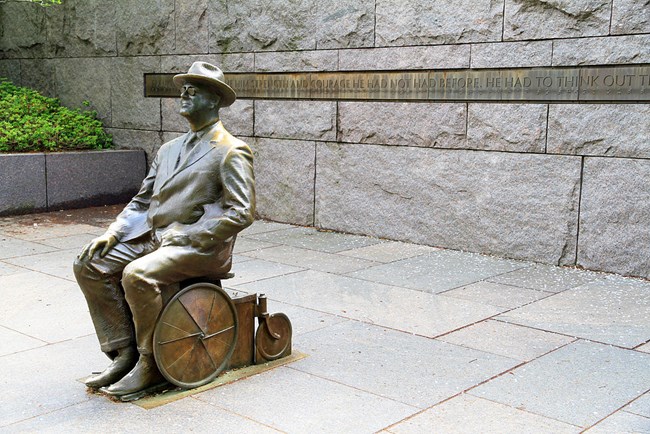
Finally Approved by Congress in 2001, National Park Service
On the flip side, President Roosevelt’s response to Polio may have also been seen as positive. First of all, he was reelected for a record four terms in office which meant he garnered enough positive support to be reelected providing the opportunity for him to pass his well-known influential policies. Secondly, his “illusion of walking or standing” displayed an image that he did not let the virus overcome him (Fairchild 2001, 500). He portrayed a symbol of strength, how he was much more than the disease that paralyzed him: “He carefully, skillfully, deceitfully cultivated an image of charisma, vigor, and, most importantly, recovery” (Fairchild 2001, 500). The question is, was this such a bad thing to do? By doing so, did this take away from the necessity and urgency of combatting the disease? We saw President Trump essentially do the same thing. While he had Covid, he made sure to let the public know that he was remaining strong and that virus was not impacting him. He even pushed for in-person presidential debates. President Trump’s behavior attracted positive responses from his base, people believing that he is a tough leader sending a message that defeating Covid-19 is possible. However, this needed to be balanced out, not over downplaying the virus. If President Trump responded to Covid-19 quicker and told the public to wear masks from the start, the election could have turned out differently. Yes, President Roosevelt hid his paralysis, but he proved Polio to be on his mind and was able to respond promptly in certain situations: “The Georgia Warm Springs Foundation (Warm Springs), a well-known rehabilitation centre for polio victims; the National Foundation for Infantile Paralysis (NFIP), whose fundraising made polio research and the discovery of a vaccine possible; and the March of Dimes campaign were all at the core of Roosevelt’s medical legacy” (Dorfman et al. 2018, 161). When health care was a struggle during the Great Depression, the NFIP created a “new model for philanthropy and healthcare” (Dorfman et al. 2018, 172). The organization was viewed as a “fairy godmother” whose “birthday balls adopted the slogan: ‘We Dance So That Others Might Walk” (Dorfman et al. 2018, 172). One must also take into consideration which type of crowd these messages appealed to in terms of differential effects. That said, this section will end here for readers to develop their own opinions of Presidential controversial responses to medical disasters.
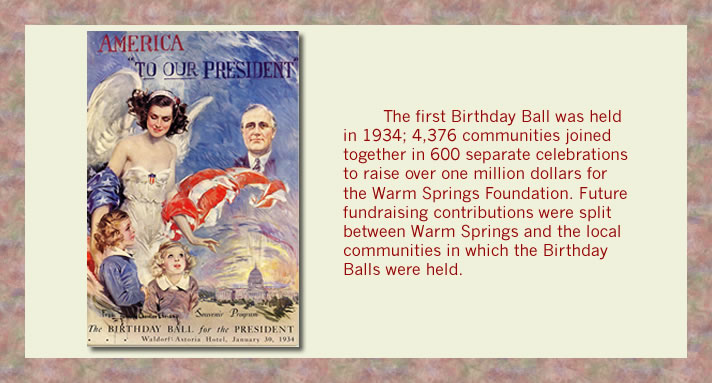
Franklin D. Roosevelt, Presidential Library and Museum
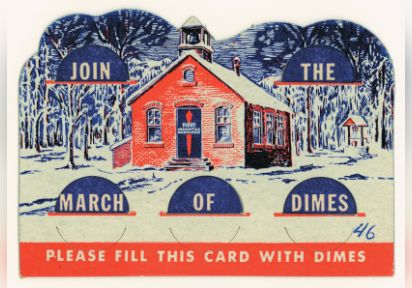
Yale School of Medicine
